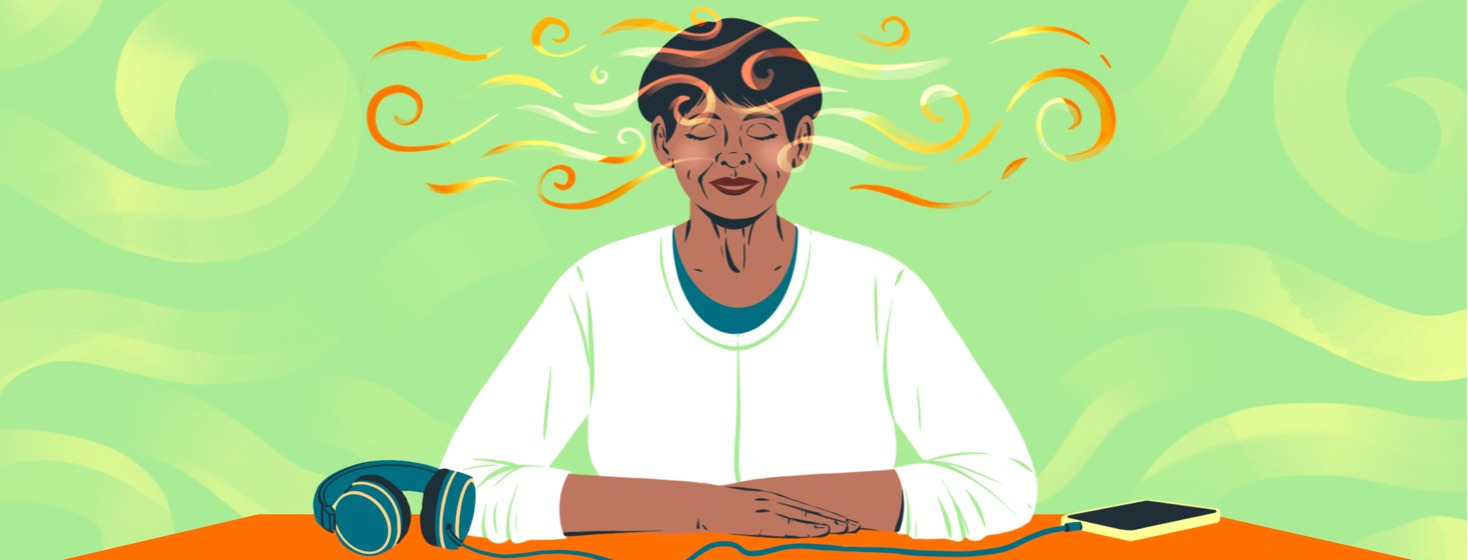Practicing Presence to Soothe Dry Eye Pain and Anxiety
Before I developed dry eye disease (DED), worry and anxiety weren’t a big part of my life. However, since developing the condition, I’ve had both offenders creep into my head, and I’ve had to become more aware of combating them. According to research, people with “depression, stress, and anxiety are more prone to DED.”1
This can be a vicious cycle because dry eye disease can contribute to depression and anxiety, and depression and anxiety can contribute to dry eye disease.
Distracting myself from dry eye
Research shows that “chronic depression may worsen dry eye symptoms by promoting production of proinflammatory cytokines.” Also, a distressed mental state can influence “the nervous system to suppress tear secretion from the lacrimal gland.” In addition, studies show that “depressive mood can also lower the threshold for perception of discomfort or pain caused by DED by affecting cognitive modulation of attention.”1
I have experienced this phenomenon. When I’m constantly thinking about or worrying about my eyes, I sense the pain more. However, when I’m distracted by engaging activities like cooking or gardening or exercising, I don’t think about my eyes as much.
Even on my worst of dry eye days, I’ve noticed that when I am fully present and engrossed in an activity, an hour can pass without focus on my eyes. At the end of that time period, I’ll look back and think, “Wow, I didn’t even think about my eyes for the last hour.” My brain was distracted from the pain.
The mind is complex
The mind is a powerful and complex system that can affect the way we perceive pain.
Research shows that individuals who catastrophize pain, based on past experience or on perceived pain, may impact their level of pain tolerance and distress.2
After being diagnosed with corneal neuralgia as a result of chronic dry eye, I began reading this sort of research, and I became highly interested in the relationship between pain, the brain, and the nervous system. I found the app Curable, which discusses how the brain can become conditioned to send signals of pain, even when there is nothing present to dictate pain. The brain may sometimes need to be “rewired” to stop sending those pain signals and decrease sensitization.
An example that the app gives to do this is a simple word association exercise. Instead of saying that something is painful, we can say that it is “less soothing.” The word soothing suggests a different kind of sensation to our brain.
Being fully present
According to the article "Neuropathic Corneal Pain: Approaches for Management" in Ophthalmology, neuropathic corneal sensitization is a real thing. However, the condition can be treated with many different therapeutic strategies, including those dealing with the brain.3
The article states: “Meditation and mindfulness may contribute positively to pain management through activation of multiple brain regions that contain a high expression of opioid receptors. They may have a positive impact on overlapping co-morbidities, such as depression and anxiety in patients with NCP (neuropathic corneal pain).”3
Mindfulness is being fully present and aware of what we are doing. I’ve realized that I can choose to be mindful of the pain or mindful of the things that I love doing. Being present is not a cure for dry eye disease, but I have found this mindset to be helpful for me.
What do you do to distract your brain from dry eye pain?

Join the conversation